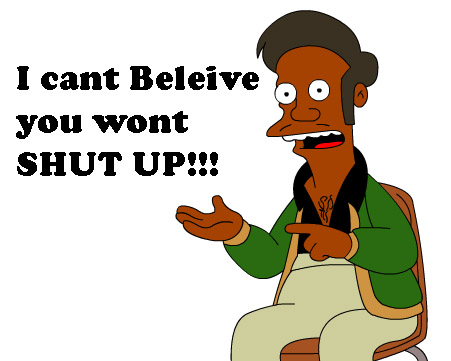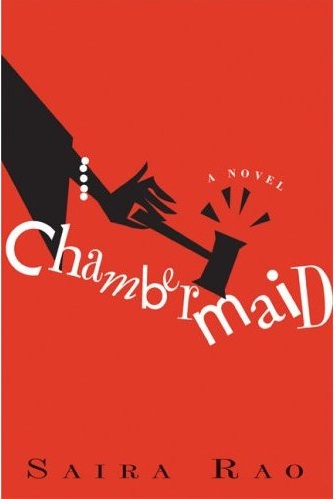 EDITOR’S NOTE: So, it turns out Mr. Terror Dentist /Wilco’s Pet has got himself a woman these days. Saints be praised. And not just any woman, but a cultural anthropologist who, get this, just got back from India after 16 months spent studying the everyday lives of policemen in Uttar Pradesh. Apparently pecking out lengthy observational dispatches on the biomechanics of ethnicity and identity politics is their idea of fun during a romantic getaway to Rhode Island, which is where my letter found Anand. Her name is Beatrice Jauregui and she makes a lot of good points, and many that back up Dan “Free Speech Is Fine Until Somebody Gets Hurt” Buskirk‘s perspective on all this. I still like her, though.
EDITOR’S NOTE: So, it turns out Mr. Terror Dentist /Wilco’s Pet has got himself a woman these days. Saints be praised. And not just any woman, but a cultural anthropologist who, get this, just got back from India after 16 months spent studying the everyday lives of policemen in Uttar Pradesh. Apparently pecking out lengthy observational dispatches on the biomechanics of ethnicity and identity politics is their idea of fun during a romantic getaway to Rhode Island, which is where my letter found Anand. Her name is Beatrice Jauregui and she makes a lot of good points, and many that back up Dan “Free Speech Is Fine Until Somebody Gets Hurt” Buskirk‘s perspective on all this. I still like her, though.
Dear Phawker,
Although I cannot, in the final analysis, agree with Nita Rao‘s trumped-up charges of the Phawker cartoon being a “repellant racist illustration” and “a cheap, bigoted joke of]… satirized…ethnicity,” I can see her point. The key part of her witty — if snarky and gratuitously-pop-culture-referencing — critique is the part where she says that the book’s “plotline is only incidentally narrated by an Indian-American narrator.” The unfortunate thing about the illustration (which I can guarantee many Indian Americans, and even Indians in India would find offensive) is that it can be seen as essentializing — that’s fancy academic parlance for something like “pigeonholing” — the author and her “kind” as, at the end of the day, little more than a bunch of traditional, mystical, religious, superstitious savages… one of whom, in this case, just happens to be participating in, and writing about, one part of the world of American law, gavel and scales at the ready.
this case, just happens to be participating in, and writing about, one part of the world of American law, gavel and scales at the ready.
Put another way, in a nutshell, people such as Nita bristle at the idea of being understood as having no identity or personality outside of western stereotypes of Indians (or Indian descendants). Our “terror dentist” friend, Anand, makes this point when he says, “I can attest that there’s an ignorance in our [American] society which believes that all Indians ‘wear diapers, have eight arms and worship cows.'” It’s the same reason a lot of South Asians find the depictions of Apu on “The Simpsons” offensive; although the counter-argument generally goes that he is SUPPOSED to be an ironic caricature. Still, many people don’t find it very funny. Why, they may ask, do Indians always have to be speaking in funny accents, or sitting yogi style on lotus leaves (albeit in a Hillary-style pantsuit) with tridents in their hands (even if cleverly converted into a set of scales of justice)? Even many of the more cosmopolitan people from India would find such things offensive — not least, the hundreds of millions of Muslims, Christians, Buddhists and Indian nationals of other non-Hindu persuasions.
***
“The world still thinks we [Indians] are nothing but a bunch of sadhus [Hindu holy men] and snake charmers,” a well-traveled man from New Delhi once said to me. “We are not — we are much more interesting and important than that,” he continued. It’s tricky — people cannot often articulate what they mean when they instinctively react to something like this as “racist”. But, I could tell you as soon as I saw the cartoon — and even more so when I read the article about Chambermaid, and saw how little the cartoon seemed to relate to the content of the book — that Phawker would receive letters like this.
 The question is, why does the author’s ethnicity matter at all, in an interview promoting her book on clerking in the U.S. justice system? Though I have not read it, the book’s plot seems to have little to do with, or make much mention of, the fact that the narrator, and the author on whom she is clearly based, are of Indian “seed.” The only part where that’s even hinted at in the interview with the author, is when it is said that the “insufferable tyrant” the narrator clerks for could not, or would not, properly pronounce her name. So then, why “incorporate [her ethnicity] into the illustration.” Why highlight the fact that she’s of Indian descent at all, when the book is by an American author, who is writing about an American institution, probably for a primarily American audience? Why not make the cartoon an illustration of a particularly amusing part of the book? Moreover, was the author herself consulted about this cartoon? What is her response?
The question is, why does the author’s ethnicity matter at all, in an interview promoting her book on clerking in the U.S. justice system? Though I have not read it, the book’s plot seems to have little to do with, or make much mention of, the fact that the narrator, and the author on whom she is clearly based, are of Indian “seed.” The only part where that’s even hinted at in the interview with the author, is when it is said that the “insufferable tyrant” the narrator clerks for could not, or would not, properly pronounce her name. So then, why “incorporate [her ethnicity] into the illustration.” Why highlight the fact that she’s of Indian descent at all, when the book is by an American author, who is writing about an American institution, probably for a primarily American audience? Why not make the cartoon an illustration of a particularly amusing part of the book? Moreover, was the author herself consulted about this cartoon? What is her response?
The editor’s rebuttal is intelligent, explanatory, and well-crafted. And let the record show that I basically agree with him (especially on the “answering a sling shot with an atom bomb” bit), and appreciate the time he took to offer a detailed analysis of the motivations and meanings of the decision to commission the cartoon. That said, I have one more question — a mental exercise, really–for him, from an American anthropologist who’s just returned from 15 months of field study in northern India:
How would he feel about seeing a cartoon in an Indian newspaper (coupled with an article about, say, an American Fulbright student’s scientific research on the environmental and social damages being caused by the Indian government’s dam construction policies), of a smiling white American man, donning a cowboy hat and boots, wearing a red, white and blue “I {heart} Bush” t-shirt, sitting on a mountain of greenbacks–a bunch of which are also filling and spilling out of his pockets–and holding a gun in one hand, a land surveyor scope in the other, with which he conducts his study of a dam project? N.B. the illustration is NOT intended to lampoon the student or Americans per se, and the author/cartoonist are, in fact, lukewarm on, but also slightly pro-Bush (“he’s fucked up Iraq, hasn’t he… but that U.S.-India nuclear deal will sure solve a lot of our problems!”) and are also anti-dam construction (because it disrupts certain local ecologies and displaces thousands of people from their homes when water is re-routed to flood their villages).
that U.S.-India nuclear deal will sure solve a lot of our problems!”) and are also anti-dam construction (because it disrupts certain local ecologies and displaces thousands of people from their homes when water is re-routed to flood their villages).
Just some food for thought. And admittedly, my example does not account for the sardonic/parodic character of Phawker as a publication in a certain media [sub-?]genre. In a word, it’s rather complicated. Thus, I am a bit surprised to see [again, in the editor’s response] a virtually diametric juxtaposition of Rush Limbaugh and the “PC police” as the only two categories of persons that might be able to duke it out over problems like this. In a sense, this is just as over-simplifying as the original accusation of all being “utterly undone” by a “cheap bigoted joke” of a cartoon. After a bit of reading, I’ve come to greatly appreciate Phawker’s mission and aspirations to complexify, and offer a “sane alternative” to, the often feckless, mindless, and sometimes heartless media coverage and editorializing available today. Indeed, let’s have a debate that accounts for and appreciates the multifarious (multi-armed?) perspectives of all readers.
Bea Jauregui
OLD CITY
Bea is an American anthropologist writing her dissertation on the everyday lives of police officers in Uttar Pradesh; though of Anglo descent, some might consider her of Indian ascent.
